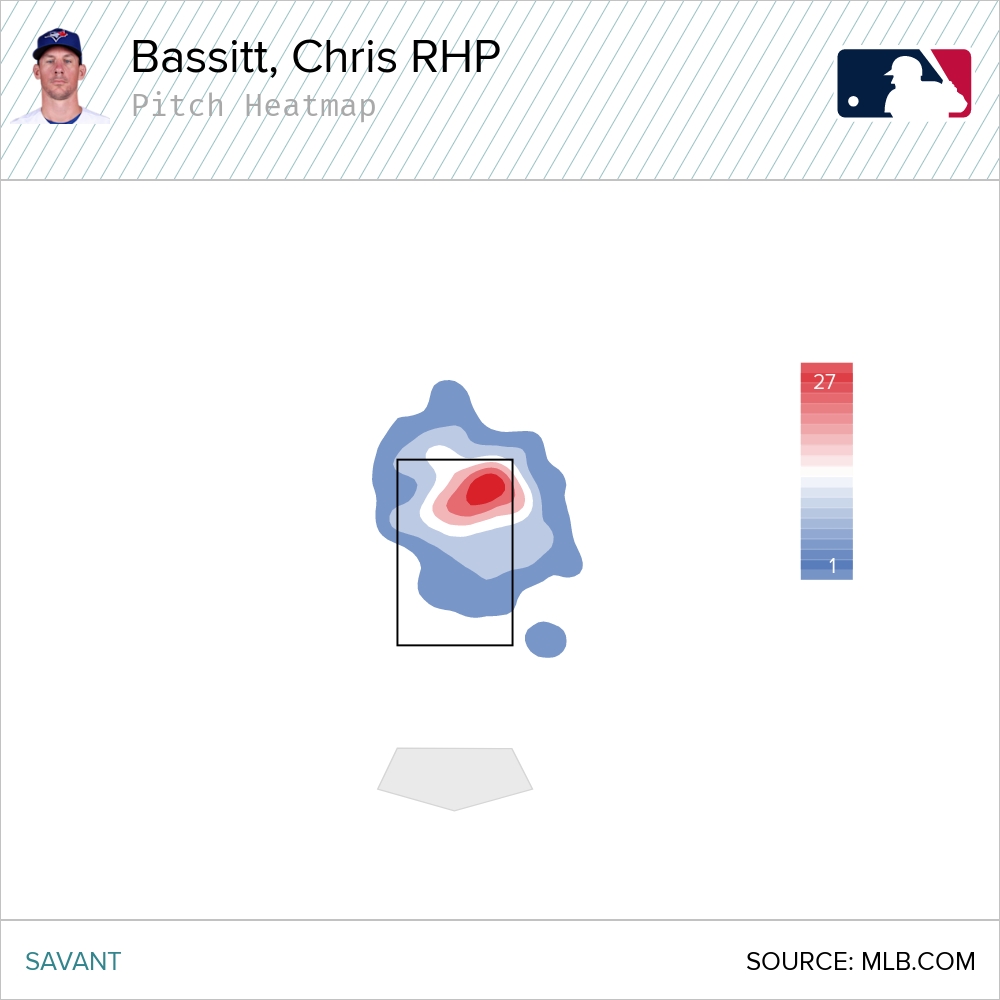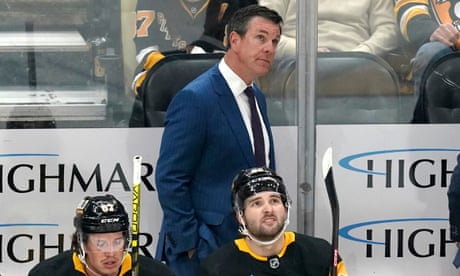
Stepping into the batter’s box against Chris Bassitt can be a disorientating experience.
The veteran right-hander has a beguiling seven-pitch repertoire and there is no corner of the plate he’s unwilling to explore. He’s also been equally effective against hitters from each side of the plate in his career, allowing a .682 OPS to lefties and a .660 OPS to righties.
While splits were a little bigger in 2022, it’s still fair to describe Bassitt as a perplexing opponent no matter who he’s facing. That said, the complexity of his approach is probably overstated by the fact he has seven pitches he used at least six per cent of the time in 2022.
Bassitt is essentially two different pitchers depending on whether he’s facing a lefty or a righty. He’s not unique in his inclination to adjust his pitch mix based on his opponent’s handedness, but his minimal career splits and the depth of offerings he can call upon set him apart.
In order to better understand Bassitt’s approach to pitching, it’s worth examining his plan of attack against righties and lefties separately. One overwhelming jumble of pitch usage numbers then becomes two more manageable and coherent units to wrap your head around.
Who Bassitt is against right-handed hitters
His style in five-ish words: Sinkerballer with horizontal-breaking soft stuff.
Top five pitches (2022):
|
Pitch |
Usage (Percentage) |
|
Sinker |
38.7 |
|
Four-seam fastball
|
13.6
|
|
Slider |
13.4 |
|
Sweeper |
11.9 |
|
Curveball |
11.2 |
Basic peripherals (2022): 7.25 K/9, 1.66 BB/9, 0.70 HR/9
What’s the plan?: When he’s facing right-handed hitters, Bassitt throws his sinker almost three times as often as any other pitch — and he pounds the zone with it:
Just 34.2 per cent of Bassitt’s sinkers to right-handers last year were outside the strike zone. With that pitch as his building block, he’s able to stay ahead in the count and set up his two breaking balls with a glove-side horizontal run.
The first is a mid-80s slider that induces a relatively modest whiff rate (22.9 per cent) but is expertly commanded on the outside part of the plate to righties.
The second is a pretty mid-70s sweeper that consistently has same-handed opponents reaching for air.
Since Bassitt started featuring the pitch in his arsenal prominently in 2021, it has accounted for more strikeouts against right-handed hitters (53) than any of his other offerings.
The veteran right-hander can work the top and bottom of the zone with his four-seamer and his curveball, but what makes him most difficult to hit is this sinker/slider/sweeper combo. Righty bats always have to be aware of a sinker bearing in on them while also accounting for multiple breaking balls trailing away.
The result is plenty of weak contact and an extremely low walk rate due to a reliance on the sinker that Bassitt commands so well.
Who Bassitt is against left-handed hitters
His style in five-ish words: Cutter-first guy featuring slow curve.
Top five pitches (2022):
|
Pitch |
Usage (Percentage) |
|
Cutter |
28.2 |
|
Sinker
|
27.7
|
|
Curveball |
16.9 |
|
Four-seam fastball |
12.7 |
|
Changeup |
8.4 |
Basic peripherals (2022): 9.61 K/9, 3.43 BB/9, 1.26 HR/9
What’s the plan?: Bassitt doesn’t have one dominant pitch against lefties the way he does against righties, but it’s notable that a pitch he rarely uses against same-handed batters (7.3 per cent) is his top offering when he’s at a platoon disadvantage.
The 34-year-old likes to use his cutter to get up and in against left-handed hitters, inducing a higher pop-up (18.8 per cent) and whiff (31.0 per cent) rates.
This pitch’s effectiveness goes a long way towards explaining his solid strikeout rate vs. lefties as it induces more whiffs than any of his other top-five pitches against them.
While Bassitt’s sinker remains a factor, it’s less effective against opposite-handed hitters and most of his hard pitches are fastballs and cutters thrown at the top of the zone.
That opens up his looping curveball to do some damage as it looks like it could be one of those high pitches before falling off the table.
Although the vertical and horizontal movement on the pitch is approximately average for its speed, its low velocity makes it a tough change of pace for hitters. No qualified pitcher threw a curveball with a lower average velocity than Bassitt in 2022 (71.6 mph).
His other favourite secondary pitch to use against lefties is an 85.1 mph changeup. While that offering provides another velocity lane for hitters to be aware of, it has been worth plus-3 runs over the last three years according to run value — and lefties slugged .654 off of it last season. It’s more of a backup option than a centrepiece of Bassitt’s approach.
The righthander’s pitch mix against lefties induces plenty of whiffs, but the slight marginalization of the sinker in favour of the cutter leads to a downgrade in both control and command, affecting walk and home run rates.
When most starters adjust their approaches to opponents based on handedness they are taking one of their four pitches out of commission and effectively becoming a three-pitch pitcher against anyone they face.
When Bassitt does it he can afford to minimize his usage of two pitches to every hitter and still have more tools at his disposal than the vast majority of his peers.










